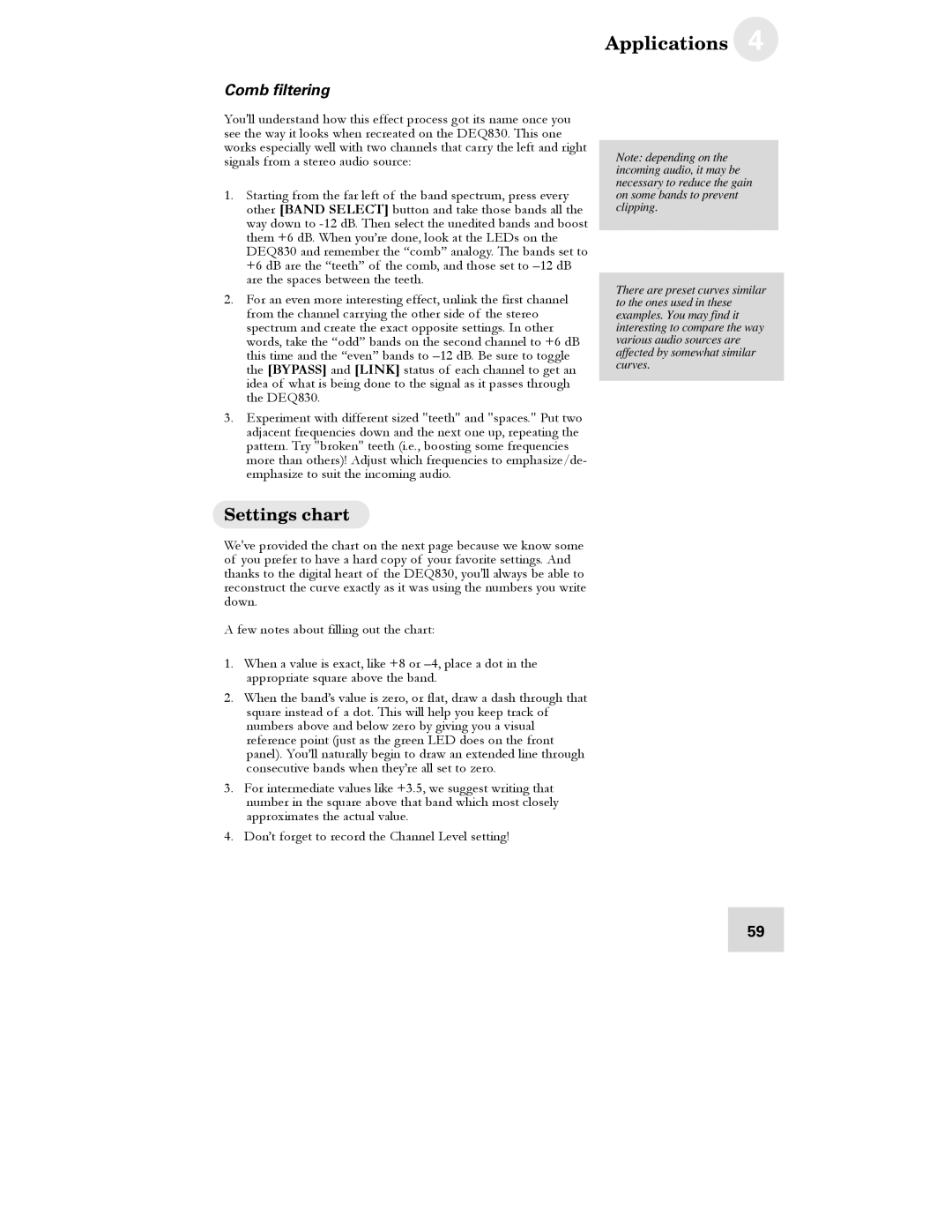
Applications 4
Comb filtering
You'll understand how this effect process got its name once you see the way it looks when recreated on the DEQ830. This one works especially well with two channels that carry the left and right signals from a stereo audio source:
1.Starting from the far left of the band spectrum, press every other [BAND SELECT] button and take those bands all the way down to
2.For an even more interesting effect, unlink the first channel from the channel carrying the other side of the stereo spectrum and create the exact opposite settings. In other words, take the “odd” bands on the second channel to +6 dB this time and the “even” bands to
3.Experiment with different sized "teeth" and "spaces." Put two adjacent frequencies down and the next one up, repeating the pattern. Try "broken" teeth (i.e., boosting some frequencies more than others)! Adjust which frequencies to emphasize/de- emphasize to suit the incoming audio.
Settings chart
We've provided the chart on the next page because we know some of you prefer to have a hard copy of your favorite settings. And thanks to the digital heart of the DEQ830, you'll always be able to reconstruct the curve exactly as it was using the numbers you write down.
A few notes about filling out the chart:
1.When a value is exact, like +8 or
2.When the band’s value is zero, or flat, draw a dash through that square instead of a dot. This will help you keep track of numbers above and below zero by giving you a visual reference point (just as the green LED does on the front panel). You’ll naturally begin to draw an extended line through consecutive bands when they’re all set to zero.
3.For intermediate values like +3.5, we suggest writing that number in the square above that band which most closely approximates the actual value.
4.Don’t forget to record the Channel Level setting!
Note: depending on the incoming audio, it may be necessary to reduce the gain on some bands to prevent clipping.
There are preset curves similar to the ones used in these examples. You may find it interesting to compare the way various audio sources are affected by somewhat similar curves.
59
